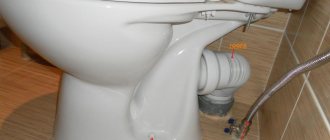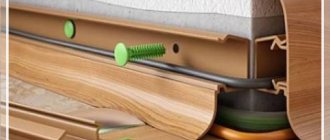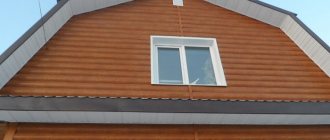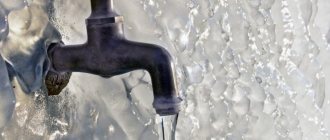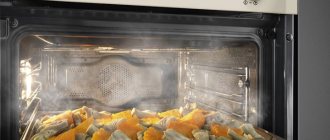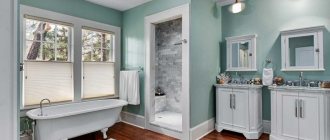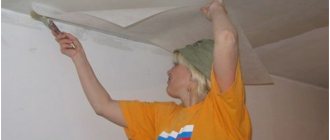21167 0 4
MesterulManole October 28, 2016Specialization: many years of experience in finishing works of residential and office premises, summer houses, country cottages, etc. Hobby: cycling in all its forms
Aluminum battery on drywall - read on to learn how to hang it
Greetings. This time you will learn how to attach heavy objects to drywall. I hope the topic of the article will be of interest to many and there is a good reason for this. Finishing building surfaces with plasterboard is becoming increasingly widespread.
At the same time, you most likely will not be able to secure heavy objects to such a finish using traditional methods. So, how to fix certain objects on the surface of a sheathed gypsum board so that the result is durable and looks neat?
Dowel-nails
Installation of a frame for plasterboard begins with fastening the hangers, and then the guide profile to the floor and ceiling. Most often, hangers and profiles are attached to a concrete or brick wall. Less often - to a wooden base, even less often - to plaster. For wood and plaster you need self-tapping screws, we will return to them a little later; for concrete and brick you need dowel-nails. They come in two types and both are suitable for fastening frame parts to a solid base.
Dowel-nails with thread. The simplest and most common option for fastening profiles. To use it, it is enough to have a hammer drill with different modes; in some cases, you can get by with a simple drill or even a screwdriver. Externally, the nails look like a self-tapping screw, but they are exactly a nail; you need to hammer it into the dowel with a hammer and only at the end can you tighten it with a screwdriver. Pay attention to the thread, it is not symmetrical and is shifted towards the head, so it is driven in easily. If necessary, the nail can be unscrewed.
Dowel-nails with thread for fastening plasterboard profiles to walls
Dowel-nails are needed with a size of 6x40mm or 6x60mm, this is quite enough for strong fastening of the guide profiles. It is better to use only on walls and floors. If the holes in the ceiling are loose and the dowel-nails dangle in them, then it would be safer to choose another fastener for the ceiling - a wedge anchor or a dowel-nail for a pneumatic gun.
Dowel nails for a mounting gun. Expensive, but very durable fastening option. For the ceiling, you can use short 18mm dowel nails. Despite the small size, the connection strength is very high.
Cassette with dowel-nails for construction and assembly gun
When driving a nail, it is practically soldered to the concrete due to the high temperature. Such dowel-nails are driven in with a special pneumatic gun. Not every home has such a tool, but the speed of operation and durability are at a high level.
Considering the high cost of the air gun and the dowel-nails for it, the popularity of such fasteners, even among construction crews, is low. Efficiency is excellent, but too expensive.
How to hang a shelf on drywall
Often home craftsmen are faced with the task of hanging a lamp, hanger, shelf or TV on a plasterboard wall. But many of them are quite justifiably afraid that the wall will begin to crumble and crumble due to drilling and other manipulations. Accordingly, all work must be carried out with caution, following the recommendations below.
Self-tapping screws
To assemble a frame from profiles, you will definitely need self-tapping screws - for wood, if the frame guides are attached to a wooden surface, and for metal, to fasten different types of profiles together.
Self-tapping screws for fastening the profile frame. Two types of self-tapping screws are excellent for fastening the profile to each other - with a cylindrical head and with a press washer. All threads are small, for metal.
Self-tapping screws with cylindrical head
Self-tapping screws with press washer
These screws can have different coatings, tips, and sizes. Which one you choose is up to you, the difference between them is not fundamental. To assemble the frame, metal screws with a diameter of 3.5 mm and a length of 9.5 mm are used.
Self-tapping screws for fastening plasterboard sheets. To install gypsum board sheets to the frame, you will need self-tapping screws, always with a countersunk head. For a metal frame - fine thread, for a wooden frame - large.
Self-tapping screws for fastening drywall to the frame
The tip can be sharp or with a drill. A self-tapping screw with a drill is used for metal frames with a thickness of more than 0.7 mm. This way the profile does not deform and it is easier to screw in the self-tapping screw.
Anchor screws
Anchor screws, or anchors, are great in two situations:
- Plasterboard finishing was done using mounting adhesive, and the distance to the load-bearing walls was minimal.
- The gypsum board sheathing is made on a frame, but is located at a short distance from the main wall.
In this case, you will need a hammer drill or drill and anchor screws. The future location of the item is marked on the wall. Holes are punched according to the markings and anchors are driven in. Subsequent tightening will secure the anchor firmly in the wall.
The main subtlety of this fastening is that the hole must be punched according to the diameter of the anchor. If it is smaller, the fasteners simply will not fit, and a large diameter will not provide reliable fastening, and there will be backlash.
But the most problematic question is how to attach a shelf to a plasterboard wall if the load-bearing surface is at a distance of 100 millimeters or more.
Rivets
An alternative to self-tapping screws when installing a frame from profiles can be rivets.
Rivets and riveter
The method is excellent, the rivets hold well, nothing falls off, the head has minimal convexity. But this connection method is used much less frequently; it requires additional tools and more time.
No hangers
When creating a suspended ceiling, it is not recommended to skimp on hangers. Fastening without the use of hangers is often used when they want to install a frame on an uneven base; this temptation is especially great when working with wooden coverings.
As a result of such installation, the profile loses its mobility - due to shrinkage deformations, cracks may appear on the surface of the drywall. In addition, when rigidly fixed to the ceiling, the main advantages of a suspended structure are lost: the ability to level the surface, hide communications and additional insulation inside the ceiling.
Plasterboard ceilings are mounted on an anchor or direct suspension. Read more about installation methods in the article “Drywall - ceiling installation”.
Cutter
A profile cutter is not a fastener, it is a tool. The fastener in this case is the profile itself. The cutter pierces both profiles at the junction, cutting out the retaining whiskers on the reverse side.
Profile cutter for drywall
The cutter has a lot of advantages over self-tapping screws and rivets - there are no costs for fasteners, there are no convex surfaces, the connection occurs instantly, and its strength is fully consistent with the design.
68 tools for working with drywall
Read
Tips and tricks
One of the most common fastening options is anchor bolts. Using this method of fastening allows you to ensure a strong connection and the shelf will not come off.
To create such a mount, you will need:
- Working holes are drilled at the locations of future fasteners.
- Now recessed holes are made in the monolithic load-bearing wall.
- The next step is to insert the anchors into the drilled holes.
- Anchor bolts can be used as fastenings or additional brackets can be installed on them.
For small and light objects, Driva dowels are used as an alternative. But this is acceptable in cases where the drywall is glued and not held on the frame.
Despite the apparent fragility of a material such as drywall, with the proper approach and compliance with all work conditions, it demonstrates sufficient strength to hold most pieces of furniture and other objects on the wall surface.
Anchors
A variety of anchors will come to your aid when the walls lack strength, they crumble and crumble when drilled. Or when you need to hang something very heavy on the wall.
Wedge anchor. Not to be confused with a wedge anchor, this is a different type of fastener and is not suitable for a profile. And the wedge anchor, which is shown in the photo, is well suited for attaching pendants to the ceiling.
Wedge anchor for fastening plasterboard guide profile
Most often, threaded dowel-nails are used for ceilings, but they may not be reliable in a vertical position due to the poor strength of the ceiling. The dowel-nail can dangle, and with it the entire frame.
The wedge anchor holds up perfectly even in loose concrete; its design tightly wedges the mechanism so that pulling it back will be a difficult task. In addition, the wedge anchor meets fire safety requirements, since it has no plastic components and is made entirely of metal. For this type of fastener you will need a hammer and hammer.
Anchor bolt. Or a wedge anchor. Anchor bolts are not needed to fasten the frame and plasterboard sheets, but they are perfect for hanging very heavy objects on a plasterboard wall. Boiler, bracket for a large TV, wall cabinet.
Anchor bolt for heavy objects
The anchor bolt is not mounted into the drywall or frame, but into the main wall. It is important to understand that the length of the anchor bolt must be chosen so that most of it is in the main wall and only a small piece of it sticks out from the plasterboard wall. This is the only way it will withstand heavy loads and not break.
The anchor is foldable. Attaches directly to a sheet of drywall rather than to a concrete wall. Folding supports increase the strength of the fastener.
Folding Drywall Anchors
A folding anchor can have different types of pins - a hook, a ring or a screw. The supports can be either folding or tilting. Folding supports are equipped with springs, tilting ones are not.
Folding anchors are useful for not very heavy interior items - shelves, clocks, paintings, mirrors. You can use them to hang a chandelier on the ceiling.
Conclusion
Now we know that attaching heating radiators to a plasterboard wall, as well as installing other heavy objects, is not impossible. I hope that as a result of independently installing heavy objects on plasterboard sheathing, you will receive high-quality and reliable fastening. To make the task easier, I recommend watching the video in this article.
Did you like the article? Subscribe to our Yandex.Zen channel
October 28, 2021
Plasterboard systems, Fasteners, hardware, meshes and membranes
If you want to express gratitude, add a clarification or objection, or ask the author something, add a comment or say thank you!
Dowels
Dowel butterfly. Simple and convenient fasteners for small interior items hung on a plasterboard wall. It got its name because of its shape. Originally sold flat. During installation, the self-tapping screw is screwed in and folds the dowel, increasing the support area and forming a butterfly shape.
Drywall fasteners butterfly dowel
It is mounted in a sheet of plasterboard in a vertical position. To prevent turning, it has special ribs. Requires sufficient space inside the wall. I wrote detailed instructions in an article about the correct installation of a butterfly dowel.
Dowel Molly. Structurally similar to the butterfly dowel, but made of metal. The dowel itself is always the same, but the pin can have different options - a ring, a hook, an angle and a screw.
Types of Molly dowels
When the threaded element is tightened, the body of the dowel turns into a kind of umbrella, resting against the sheet of drywall on the back side.
An example of fastening with a Molly dowel
This increases the support area of the fastener and its reliability. To prevent rotation, the dowel is equipped with spikes.
Dowel Driva. It has both an external conical thread and an internal self-tapping thread. It comes in both metal and plastic.
Types of Driva dowels
Using a sharp drill, it bites into a sheet of drywall and is fixed in it using an external thread. The dowel is screwed in using a screwdriver.
An example of fastening with a Driva dowel
After this, you can screw in the self-tapping screw and hang light objects.
Doubel Hartmut. Knauf fasteners. The threaded element is only a screw.
Doubel Hartmut
The metal support is folded along the plastic guides, inserted into the hole in the drywall, aligned parallel to the wall and secured with a plastic clamp. The extra mustache just breaks off.
Fastening heavy objects to drywall: an overview of fasteners and how to use them
Aluminum battery on drywall - read on for details on how to hang it
. Greetings. This time you will learn how to attach heavy objects to drywall. I hope the topic of the article will be of interest to many and there is a good reason for this. Finishing building surfaces with plasterboard is becoming increasingly widespread.
At the same time, you most likely will not be able to secure heavy objects to such a finish using traditional methods. So, how to fix certain objects on the surface of a sheathed gypsum board so that the result is durable and looks neat?
Liquid Nails
The strange name hides ordinary construction adhesive. Glue has little in common with nails and screws, but, nevertheless, it is also present in our selection of fasteners for a reason.
Liquid Nails
Liquid nails can be used to glue various materials, including drywall. To do this, you do not need to build a frame from a profile; the sheets are glued directly to the wall.
Liquid nails are supplied in tubes and are applied using a special gun.
How do you attach anything to drywall? Drywall fastenings.
Drywall is an excellent building material that allows you to create various designs and achieve almost perfectly smooth surfaces. However, at the same time, it is quite fragile and attaching anything to its surface is very problematic. Conventional fastening methods using nails or screws become completely ineffective. Even objects of insignificant weight can tear out any self-tapping screw from drywall, leaving a gaping hole in its place.
Undoubtedly, the most durable and correct method of fastening to a plasterboard surface will be fastening using so-called “mortgages”. Moreover, before installing the drywall sheets, in places where it is planned to attach something in the future, a wooden beam or a strip of thick plywood is strengthened (laid). In the future, the “mortgage” block will bear the entire load, and fastening is carried out with the most ordinary self-tapping screw. However, experience shows that after installing the plasterboard sheets, various redevelopments are possible, or you simply want to hang another chandelier on the ceiling or another cabinet on the wall. Moreover, this attribute must be securely fixed in the drywall.
Profile connectors
In addition to self-tapping screws, rivets, dowel-nails, profiles are joined together using special connectors.
Crabs. Create X-shaped or T-shaped connections of profiles.
Crab profile connector
The crabs have special latches for the profile size. For greater reliability of the connection, it is better to fasten the crab and profiles with self-tapping screws; the crabs also have holes for them.
Extension cords. If you need to increase the profile, this can be easily done using an extension cord.
Profile extension
You join two profiles through an extension and secure them with four self-tapping screws. The connection is ready.
Two-level connector. You will need it if you are planning a two-level frame made of profiles. Its function is to create X-shaped connections at a 90 degree angle.
Two-level profile connector
It goes on sale in unfolded form and, when assembled, is bent into a U-shaped element.
Side connector. Forms a T-shaped profile connection.
Side profile connector
If a side connector is not available for sale, you can use a crab by cutting off one extra side.
Corner connector. Fixes the ends of the profile at an angle of 90 degrees.
Corner profile connector
Supplied flat. Before assembling the frame, the corner is bent at the perforations. Attached to the profile using self-tapping screws.
What are the differences between different types of drywall
There are several types of classifications of finishing materials. According to the scope of use, it is divided into the following types:
- For rooms with normal or low humidity, a standard version with a gray front side and blue markings is designed. Suitable for making partitions, leveling walls in a living room, bedroom or nursery. Designation – “GKL”.
- In the kitchen, bathroom, restroom and other damp rooms, a moisture-resistant sheet with hydrophobic impregnation and additives that prevent the appearance of fungus is used. The appearance is distinguished by a greenish tint. It bears the stamp “GKLV”.
- In places of increased fire danger, “GKLO” is used - fire-resistant plasterboard with reinforcing components made of fiberglass and clay. Can withstand open fire for up to 1 hour. It has a characteristic pink color, red numbers and letters.
- The combined “GKLVO” combined the qualities of the two previous varieties.
- "GKLF" can be attached to the external facade of the building. It is characterized by increased resistance to weather conditions and a high price.
Depending on the thickness of the plasterboard sheet, it can be:
- Wall for installation of slopes and partitions, wall finishing, etc. It has the following dimensions: width 120 cm, length 200 (250, 300) cm, thickness 1.25 cm.
- Lightweight ceiling. Its dimensions are 120x200x0.9 cm and 120x250x0.9 cm.
- The most plastic arched one for creating domes, convex and wavy structures. A standard sheet 120x250x0.65 weighs 16.4 kg, which facilitates the work of the master and allows the sheet to be attached to various surfaces with a radius of 30 to 100 cm.
Plasterboard sheet can have different widths.
According to the type of edge of the main body there are:
- “PLUCK” – with a semicircular thinned one, the most common. Development of the German manufacturer Knauf. Characterized by the highest quality seam sealing.
- “PC” – with a straight (end) one, which is rarely on sale.
- “UK” - with a thinner, often found on sheets of the Gyproc company. To finish the joints it is necessary to use reinforcing tape.
At the stage of installation of the frame, no attachments were made for hanging things
If you plan to use drywall in finishing work, then you need to immediately think about hanging heavy things, because to secure them inside the frame you need to make embedded parts from wood or plywood. Embeds are a reliable guarantee that a TV or shelf will not fall off the wall.
An example of using mortgages to install a TV.
